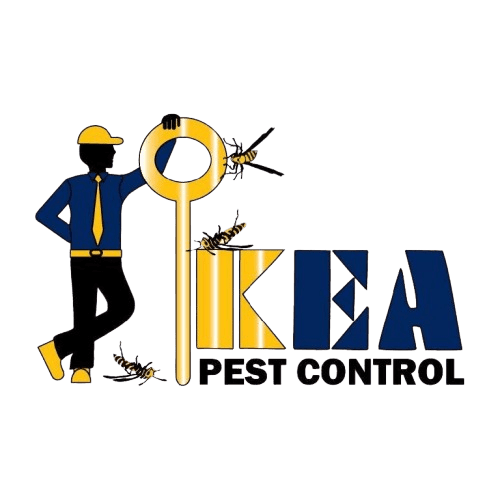How Pest Control Protects Human Health: Preventing Diseases and Saving Lives

Posted on August 25th 2025
Pest Control and Human Health: Protecting Lives Beyond the Home
Why Pest Control is Essential to Human Health
Pest control is more than just removing unwanted insects or rodents—it is a crucial part of public health and disease prevention. Much like healthcare, pest control has saved countless lives by reducing the spread of deadly diseases carried by pests. From the days of the bubonic plague in the Middle Ages to today’s battle against ticks, mosquitoes, rodents, and cockroaches, controlling pests has always been directly tied to protecting human life.
Without modern pest management, many of the diseases we now consider rare or manageable would still be devastating populations. Professional pest control is not just about comfort—it is about safeguarding our communities, homes, and even the global food supply.
A Brief History: Pest Control Saving Lives
- The Black Death (14th century): Spread by rat fleas, the plague killed an estimated 50 million people in Europe. Today, CDC notes that plague cases are rare and manageable thanks to rodent and flea control.
- Mosquito control (20th century): Mosquito management programs were key in reducing malaria and yellow fever in the U.S., documented by the World Health Organization (WHO).
- Rodent and sanitation control: The development of Integrated Pest Management (IPM) and stricter sanitation laws drastically cut down outbreaks of diseases like typhoid, dysentery, and salmonella linked to rodents and flies (EPA).
Common Pests and the Diseases They Spread
Ticks
- Lyme Disease – the most common vector-borne disease in the U.S., with nearly 500,000 cases annually (CDC Lyme Disease).
- Rocky Mountain Spotted Fever – potentially fatal without treatment (CDC RMSF).
- Alpha-gal Syndrome (AGS) – a tick-borne allergy to red meat (CDC AGS).
Fleas
- Murine Typhus – spread by fleas, especially in warm climates (CDC Murine Typhus).
- Cat Scratch Fever – linked to flea-infested cats carrying Bartonella henselae (Johns Hopkins Medicine).
- Tungiasis – caused by sand fleas burrowing into skin (National Institutes of Health).
Mice
- Hantavirus Pulmonary Syndrome – severe respiratory illness from droppings (CDC Hantavirus).
- Leptospirosis – spread through rodent urine, especially in water (CDC Leptospirosis).
- Salmonellosis – foodborne illness linked to contamination (FDA Food Safety).
👉 Learn more in our detailed guide: Mice and Human Health Risks.
Rats
- Plague – transmitted through fleas carried by rats (CDC Plague).
- Leptospirosis – waterborne bacterial disease.
- Lymphocytic Choriomeningitis (LCMV) – viral infection with neurological risks (CDC LCMV).
Cockroaches
- Asthma Triggers – cockroach allergens are among the strongest indoor asthma triggers in children (EPA Cockroach Allergens).
- Food Contamination – spread of bacteria like E. coli and Salmonella.
- Breathing Problems – linked to chronic respiratory illness.
👉 Read more: Cockroaches and Asthma in Homes.
Stinging Insects (Bees, Wasps, Hornets)
- While beneficial for the environment, stings can be life-threatening to those with severe allergies. The American College of Allergy, Asthma & Immunology (ACAAI) reports that insect stings cause more than 500,000 emergency visits annually in the U.S.
👉 See our blog: Yellow Jackets vs. Wasps – What You Need to Know.
Pest Control as Preventative Healthcare
Just like vaccines or regular checkups, pest control acts as preventative healthcare:
- Prevents disease outbreaks before they begin.
- Protects food safety by keeping contamination at bay (FDA Food Safety Modernization Act).
- Reduces allergens and asthma triggers inside homes and schools (EPA Indoor Air Quality).
- Improves mental health by reducing stress linked to infestations (National Library of Medicine).
👉 Discover how we combine safety with effectiveness in our Integrated Pest Management (IPM) approach.
Frequently Asked Questions (FAQ)
1. Why is pest control important for human health?
Because pests act as vectors for disease, spread allergens, and contaminate food and water supplies. Controlling them prevents illness and protects communities (WHO Vector-borne Diseases).
2. Which pests are the biggest threats to human health?
Rodents, ticks, mosquitoes, fleas, cockroaches, and stinging insects are among the most dangerous due to their ability to spread disease or cause severe allergic reactions.
3. Is professional pest control safer than DIY methods?
Yes. Professionals use Integrated Pest Management (IPM)—a combination of safe, effective methods including sanitation, exclusion, and targeted treatments (EPA IPM). DIY methods often fail to address the root of the problem.
4. How does pest control help children and seniors?
Children are especially vulnerable to asthma triggers from cockroaches, and seniors are at higher risk for serious infections from rodent or tick-borne diseases (CDC Healthy Homes).
5. Is eco-friendly pest control effective?
Yes. Many pest control companies, including KEA Pest Control, use eco-friendly pest control solutions as part of an IPM plan to control pests while protecting sensitive populations, pets, and the environment.
Final Thoughts
From the plague in medieval Europe to modern-day Lyme disease in Connecticut, pest control has always been at the frontlines of protecting human health. By controlling disease-carrying pests, we reduce hospitalizations, prevent deaths, and ensure a safer living environment.
Pest control is healthcare for the home—protecting families, communities, and future generations.
Contact Us
Have Questions? We’re Here to Help!
If you need more information about our services or have specific pest concerns, we’re just a click away. Contact us today with any questions or to learn how Kea Pest Control can help keep your home or business pest-free!

